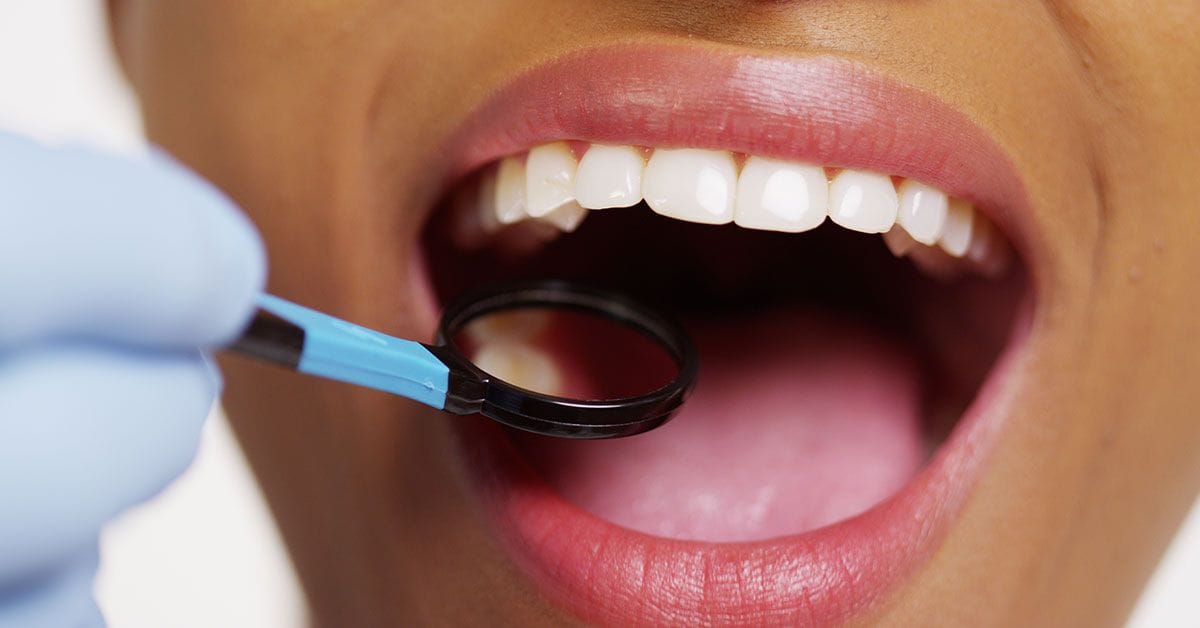Despite gum disease's prevalence—and both cosmetic and systemic impact—current treatments are limited. But new injectable hydrogels could both treat and restore gum tissue.

Gum disease is caused by plaque biofilms that form on the teeth, and it affects half of all adults in the United States.1 The infection destroys the gums, causing them to recede and leave deepening pockets around the tooth neck, with disappearing tissue and bone finally resulting in tooth loss. Beyond the teeth, gum disease has been identified as a risk factor for abnormalities in the cardiovascular, respiratory, endocrine, musculoskeletal, and reproductive systems, possibly due to longstanding inflammation and circulating microbial toxins.2
Clinical treatment usually begins with scaling and antibiotics, with the aim of controlling infection and restoring gum health without invasive surgery. However, this has a low success rate and is affected by individual compliance, smoking status, tooth location, and disease severity—and also raises a concern for antibiotic stewardship. Surgical options include bone grafting, tissue regeneration membranes, and scaffolds that deliver bioactive molecules.
Of particular interest are injectable biomaterials and hydrogels that can flow into the periodontal pocket, taking with them incorporated antimicrobials. Gels incorporating chitosan and antibiotics have shown bacteriostasis, and stability of the hydrogel for up to 14 days in the tooth pockets.3 Other work has looked at modifications of the hydrogel using nanotubes that function as an on-demand depot of antibiotics.4 But limitations exist, notably the issues of uncontrolled and rapid drug release, microbial resistance build-up, and a lack of complete tissue regeneration.
But this technology may be about to take a step forward, with a recent study exploring an injectable hydrogel that makes use of piezoelectrics— the ability of certain materials to generate an electric charge in response to applied mechanical stress.5 The work, published in ACS Applied Materials & Interfaces, is the first time such an approach has been tested.
The team combined gelatin methacryloyl with biocompatible piezoelectric fillers of barium titanate that produce electrical charges when stimulated by biomechanical vibrations such as chewing. The resulting electrical charge generation was antibacterial, but also resulted in bioactive bone tissue regeneration.
The resulting gel was able to significantly reduce plaque biofilms, bacterial metabolic activity, and the number of viable cells compared to hydrogels without piezoelectric fillers. Excitingly, the piezoelectric gel was also able to enhance the viability of bone marrow stem cells, and in mouse model tests, it reduced gum inflammation and increased bone tissue regeneration.
Earlier work by the same team has looked at piezoelectric nanofillers in dental composites used for filling holes in teeth.6 The rationale for this is that biofilms often form at the interface between the tooth and composite filling, producing enzymes and acids that both demineralize the remaining tooth and damage the composite. To protect the margin, and potentially to remineralize gaps, there is a need to remove bacteria. Piezoelectric charges could also have utility for dentures wearers,7 more than two-thirds of whom are affected by Candida albicans infection, which can lead to inflammation and sores.
Taken together, this research is welcome news for those of us who suffer from gum disease or tooth caries—and could reduce the number of us who need to wear dentures in the future.
References
- Eke, P. I. et al. Periodontitis in US adults: National health and nutrition examination survey 2009–2014. Journal of the American Dental Association 2018, 149, 576–588.
- Arigbede, A. O. et al. Periodontitis and systemic diseases: A literature review. J Indian Soc Periodontol. 2012, 16(4), 487–491.
- Dong, Z. et al. Injectable Adhesive Hydrogel through a Microcapsule Cross-Link for Periodontitis Treatment. ACS Appl. Bio Mater. 2019, 2, 12, 5985–5994.
- Ribeiro, J.S. et al. Injectable MMP-Responsive Nanotube-Modified Gelatin Hydrogel for Dental Infection Ablation. ACS Appl. Mater. Interfaces 2020, 12, 14, 16006–16017.
- Roldan, L. et al. A Novel Injectable Piezoelectric Hydrogel for Periodontal Disease Treatment. ACS Appl. Mater. Interfaces 2023, 15, 37, 43441–43454.
- Montoya, C. et al. Multifunctional Dental Composite with Piezoelectric Nanofillers for Combined Antibacterial and Mineralization Effects. ACS Appl. Mater. Interfaces 2021, 13, 37, 43868–43879.
- Montoya, C. et al. Antifungal Effect of Piezoelectric Charges on PMMA Dentures. ACS Biomater. Sci. Eng. 2021, 7, 10, 4838–4846.
